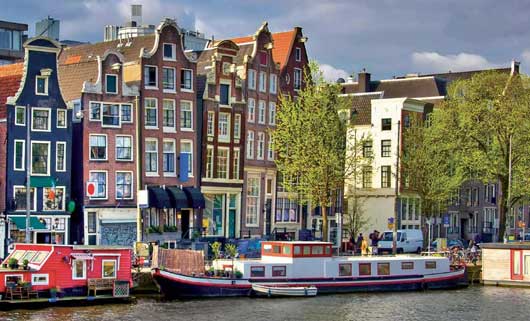Real house prices up 8.9% y-o-y in Q1 2022
The Netherlands’ house price boom continues, buoyed by record low interest rates, and with supply unable to keep up with strong demand. The average purchase price of all dwellings rose by 8.9% during the year to Q1 2022. However this follows y-o-y increases of 13.83% in Q4 2021, 15.33% in Q3, 12.29% in Q2 and 9.22% in Q1, so the market seems past the peak of the boom. And on a quarterly basis, house prices fell by 0.16% during the latest quarter.

Home sales falling amidst supply shortages
In the first four months of 2022, the number of dwellings sold fell by 30% y-o-y to 59,895 units, following a 4% decline in 2021 and 7.7% growth in 2020, according to Statistics Netherlands (CBS).
That's patly because the Dutch housing market remains tight. According to realtors’ association NVM, a potential homebuyer typically chooses between fewer than two residential properties and there is frequent outbidding – signs of market tightness. In the first quarter of 2022, 79% of all homes sold went for more than the asking price.
By end-March 2022, there were about 17,000 homes available for sale, down by 4% from a year earlier, according to NVM. The housing shortage in the Netherlands was estimated at about 200,000 units this year.
Rents, rental yields: attractive yields for a developed economy at 3.7% to 6.4%
Amsterdam apartment costs are around €6,900 per sq. m.
| Netherlands: typical city centre apartment buying price, monthly rent (120 sq. m) | |||
| Buying price | Rate per month | Yield | |
| Amsterdam | € 828,240 | € 2,569 | 3.72% |
| The Hague | € 438,360 | € 2,050 | 5.61% |
Recent news: The Dutch economy grew by 7% in Q1 2022 from a year earlier, following 6.5% growth in the previous quarter, according to the CBS. Yet on a quarterly basis, the economy logged zero growth in Q1 2022.
Recently, the European Commission downgraded its growth projections for the Netherlands to a modest 3.3% in 2022 and 1.6% in 2023, due to surging inflation, exacerbated by the war in Ukraine. The Dutch economy grew by 5% during 2021, following a 3.8% contraction in 2020, mainly driven by a strong rebound in household consumption and exports, as well as public consumption and investments.